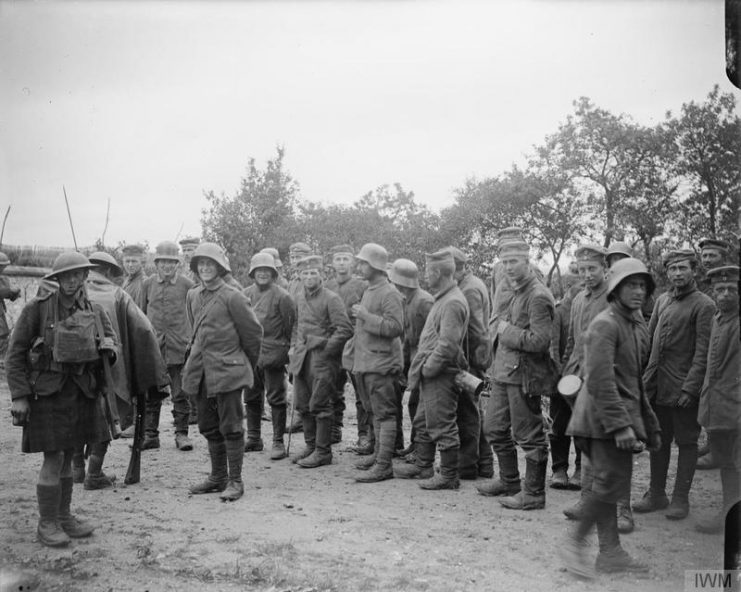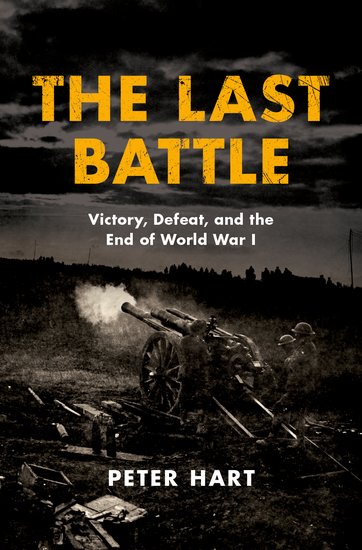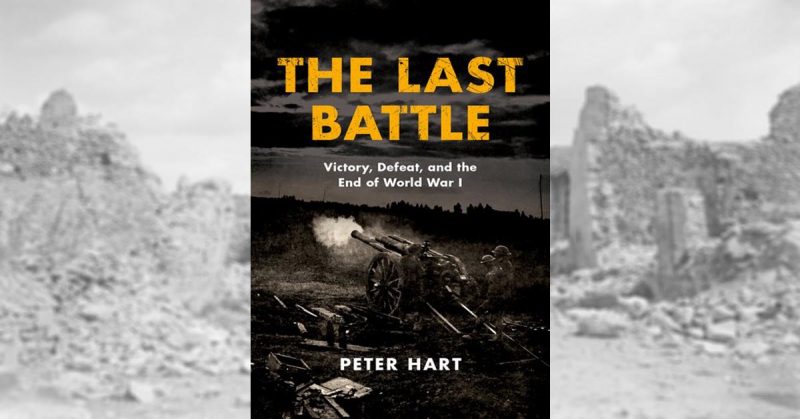“I think after the war I shall write a book, and in it, I shall put everything that is filthy and disgusting and revolting and degrading and terrifying about modern warfare—and hope thereby to do my bit towards preventing another.”
— Lieutenant Burgon Bickersteth, Headquarters, 6th Cavalry Brigade, 3rd Cavalry Division
While a great deal of attention has been given to the start of the Great War as well as to major battles like Gallipoli and the Somme, relatively few accounts focus on the final battles fought between the German Army and the Allied forces. Yet these campaigns proved absolutely decisive and were the point at which the French, British, American, and Belgian armies achieved total domination over the German Army on the Western Front.
The Last Battle: Victory, Defeat, and the End of World War I, by preeminent World War I historian Peter Hart, narrates these final campaigns of the summer and fall of 1918 which determined the outcome of the Great War. A gifted oral historian, Hart allows the voices of those who were there to tell the story, providing an intimate yet sweeping account of these pivotal battles.
After four months of bitter fighting, the Allies were desperate to keep up the momentum they had gained and defeat the Germans once and for all to prevent the war from continuing into 1919. Hart recounts the Allied victories at the Fifth Battle of Ypres and the Battle of the Meuse-Argonne, where American forces made their decisive contribution; as well as the offensives coordinated by the Allied Supreme Command that cracked the Hindenburg Line and wore down the German resistance. While victory was partly a matter of German political unrest and internal collapse, The Last Battle makes it clear that it was Allied success on the battlefield that precipitated it.

Excerpt from The Last Battle:
A great deal of attention is paid to the opening moves made in wars. This is particularly evident with the Great War. Much of the media interest during the recent centenary celebrations was taken up with an exhaustive coverage of the 1914 campaigns, with British attention focused almost entirely on the Battle of Mons. The treatment of the rest of the war has concentrated on the Allied defeat at Gallipoli, or the long drawn out tragedies of the Somme, Verdun and Passchendaele battles. There is also an obsession with the brilliance displayed by Germans in their tactical conduct of the Spring 1918 offensives. The result of such fixations is that the ultimate Allied victory a few months later must come as a real surprise as—‘suddenly’—the war is all over in November 1918. We need to explain what happened in the last few months of the war. From where exactly did the Allied victory emerge? Was the German Army really beaten? What haven’t we been told in many of the conventional accounts of the war?
Certainly, one underlying truth of the Great War must be driven home: the war finished with the collective armies of France, Britain, America and Belgium achieving total domination over the German Army on the Western Front. It was, in fact, a rejection of this that formed the basis of the puerile Nazi voices of the inter-war years that told the Germans that they had been ‘stabbed in the back’; that their army had never been defeated, that it had stood tall and strong, only to be overwhelmed by a combination of enemies within the state, in particular, Communist agitators, their ‘fellow travellers’ in the Labour movement and – from their crazed perspective – the Jews.
In reality, the Allied victory arose from the accumulated strength and proven fighting prowess of the Allied armies, their underlying materiel supremacy and the gradual collapse of German discipline in the face of inevitable defeat, exemplified by the arrival in strength of the American Expeditionary Force in the summer of 1918. The defining sequence of events had begun with the French defeat of a last gasp German offensive at the Second Battle of the Marne in July 1918. It had continued with the stunning victory achieved by the British on 8 August at Amiens, which then premiered the ‘Hundred Days’ advance to victory. It is the later stages of that decisive series of battles that concern us here. The
Germans had fallen back in disarray, taking shelter in the comforting fastness of the Hindenburg Line. This had served them well in the past—they had high hopes that it would serve them well again and were confident that they could prolong the war into 1919, if not beyond.
Yet the Allied Supreme Commander, Maréchal Ferdinand Foch, coordinated a sequence of offensives that cracked open the Hindenburg Line with the result that German resistance began to crumble. The Fifth Battle of Ypres, the Battles of the Sambre, the Selle and the Meuse-Argonne —all victories for the Allies. Yet what do we remember of them? Scant details appear in general books on the war; indeed there is little of relevance in most works devoted solely to 1918. All that seems to matter is the death of the (then) relatively unknown poet Wilfred Owen during the crossing of the Sambre on 4 November 1918. This—though sad—should not be our focal point in considering these huge offensives. They were intended to smash through the German lines, allowing no time to rest, no chance to bring up reserves, no time for the German commanders to catch their breath and review the situation rationally. The German High Command was left helpless, scrambling to react to situations that were already in the past. Unable to second-guess where the Allies would strike next, and without the manpower or resources to be strong everywhere, they stumbled from disaster to disaster.
But it had not been easy.
For the Allies did not have a monopoly in courage. The German Army may have reached the end of its metaphorical rope in the summer of 1918, but, even after four years of carnage, there were still plenty of grim unbending soldiers willing to carry on fighting to the very end. Their sputtering machine guns and booming gun batteries took a heavy toll of the attacking Allies. Many German soldiers demonstrated an unbelievable resilience, contesting every yard of ground, despite the dawning realisation that their cause was hopeless. Their sacrificed lives bought time for their comrades to retreat, take up new defensive positions and continue the resistance. Heroism and tragedy were all around during the final days of that terrible war.
The above excerpt has been adapted from The Last Battle: Victory, Defeat, and the End of World War I by Peter Hart. Copyright © OUP 2018 and published by Oxford University Press. All rights reserved.
Peter Hart is Oral Historian of the Imperial War Museum. He is the author of Gallipoli, The Great War, and Fire and Movement, and most recently The Last Battle, all published by Oxford University Press.

The Last Battle: Victory, Defeat, and the End of World War I
By Peter Hart
Available now from Oxford University Press
978-0-19-087298-4 │ 464 pages │ $34.95
